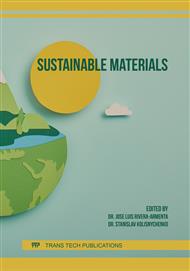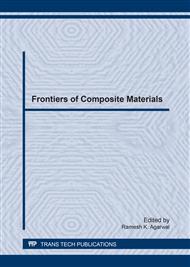p.25
p.29
p.34
p.38
p.42
p.46
p.50
p.56
p.62
Unidirectional Kenaf Polypropylene Composites: Optimization Process by Two Level Full Factorial
Abstract:
The interest of using kenaf fibers in composite fabrication has grown due to renewable, sustainable and environmental issues. The applications of kenaf composite have been broadly exploited especially in automotive industry. In this research, unidirectional kenaf polypropylene (PP) composites were prepared using the hot pressing method. The processing parameter need to be optimized to ensure that the fabrication process will enhance the mechanical properties of the composite. Thus, a research on the optimization process on the processing parameter (temperature, pressure, pressing time and kenaf percentage) on the tensile properties was conducted by using a two-level full factorial design. The effect of the individual factors and their interaction were observed. From statistical analysis, the main effect of tensile strength and young modulus is the percentage of kenaf fibers with 21.67% contribution. The interaction between kenaf percentage and pressing time also contribute an effect on the tensile properties with 13.29% contribution. Finally, the result showed that at 190°C, pressure 5 MPa, 5 minutes pressing time and 50% fiber content will give the optimum tensile strength and young modulus which is 163.12 MPa and 11.17 GPa respectively with improvement of 486% tensile strength compared to pure PP.
Info:
Periodical:
Pages:
42-45
Citation:
Online since:
March 2017
Price:
Сopyright:
© 2017 Trans Tech Publications Ltd. All Rights Reserved
Share:
Citation:



